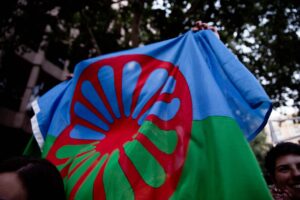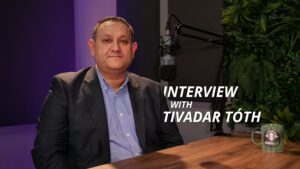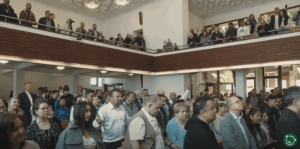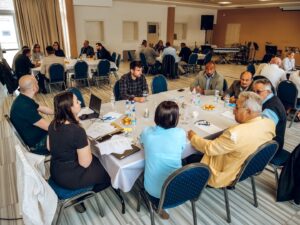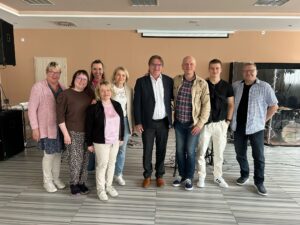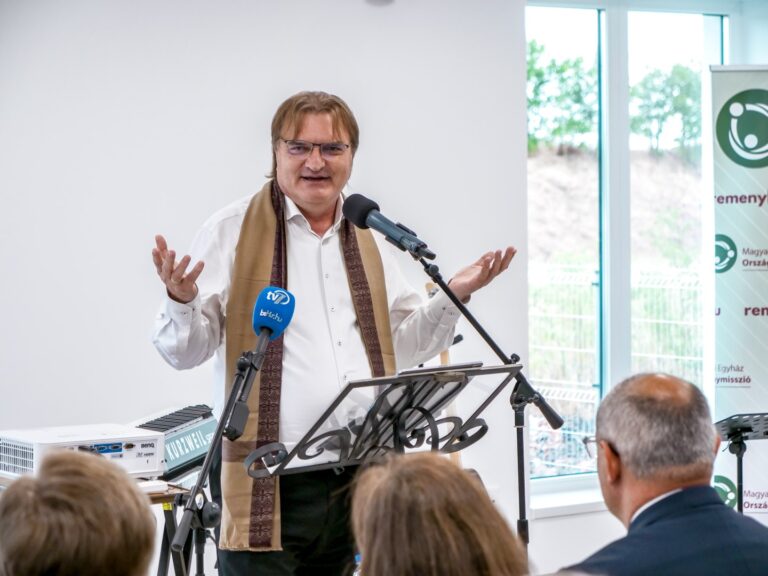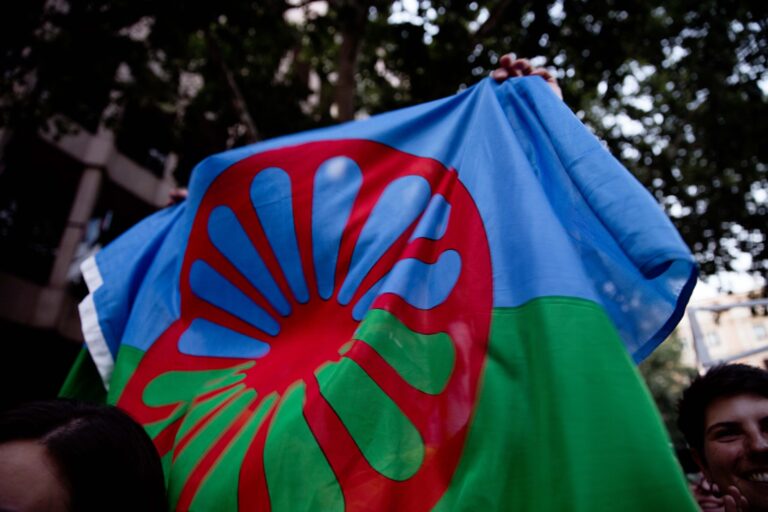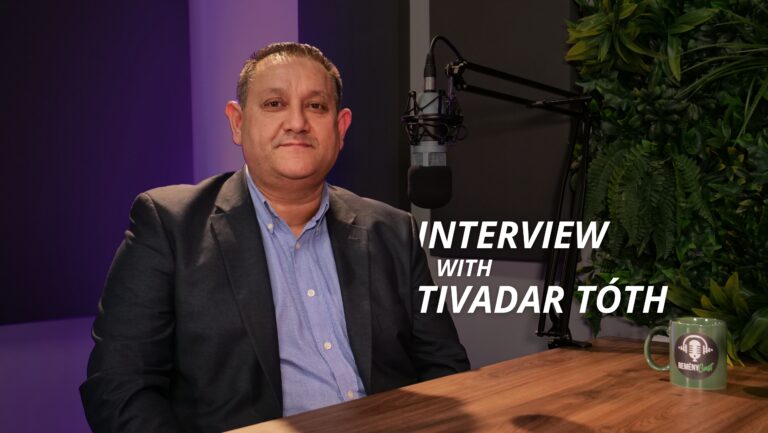Written by Melody J. Wachsmuth who is based in Croatia and has been researching and collecting oral history from Roma communities in Eastern Europe since 2011.
Listening to God’s Story
In the 1960’s, a Romanian glass seller set off from Timişoara to a village of 10,000 Roma 500 km away. He was not going just to sell windows—he felt that God sent him to share the gospel. Little did he know that his act of obedience would have a ripple effect completely transforming the village for decades to come. By the late 1980’s almost the entire village had converted, many changing their business practices to honor God. Over the next couple decades, families moved out of the village for economic reasons and went to Bucharest, Germany, France, Spain and England, forming churches in each of these places.1
In the 1980’s, a 7-year-old Roma girl in Bulgaria desired to know God. She eventually began attending a Bible study—made up mostly of children—in her mahalle. The children all prayed in tongues and had dreams and visions—she had a continual vision of her mother and father being in a church, despite their unhappy home life. Eventually, her mother turned to Jesus and then finally in 1995, her father converted. Around 2006, they began to build a church, with the help of the very poor around them. God had told them that their church would be for the rejects of society, “the Roma that even the other Roma rejected.” Now this church is one of around 800 churches in Bulgaria.2
Chances are, you have never heard of these stories, and they are just two stories among hundreds. In fact, perhaps the stories you do hear about the 10-12 million Roma in Europe only confirm negative stereotypes, portraying them as either poor victims or perpetrators of crime.
These types of images and stories come to us through the media, government agencies, and through societal stereotypes—and often these images are divorced from any personal relationship between Roma and non-Roma.
But these stereotypes are not the story that God is writing in Roma communities all throughout Europe. In fact, God has been quite active in Roma communities for decades, and his spirit continues to move, speaking to people in dreams and visions, manifesting in miraculous healings, and calling Roma leaders to serve their people.
After God directed an Albanian couple to evangelize a small Roma village of 150 families in rural Albania, one young Roma man had a vision. As a pastor prayed for him, he saw himself wandering in the darkness and then being led into the light. He soon gained a burden to serve his people. He was sent to Bible school in Tirana in 2013—but the first year was very difficult since he had never finished high school. Many times he wanted to quit and go back to the village, but people continued to encourage him and he felt Jesus was with him. He finally graduated and his desire to serve his people is stronger than ever.3
Movements of Mission
Roma churches have been growing and multiplying for decades. In the 1950’s, a ‘Gypsy Awakening’ began in France. Under the initial leadership of Clément Le Cossec, Roma leaders were trained and missionaries were sent out so that the movement spread to fifty countries in fifty years.4 In Eastern Europe, a Roma Baptist church began in the 1930’s in Bulgaria, and during the 1940’s and 1950’s, Pentecostalism began spreading among the Roma.5 In Romania, after the fall of Communism in 1989, Protestant Christianity spread rapidly among Roma communities—now there are hundreds of churches.6 A revival began in Leskovac, Serbia in the late 1980’s, early 1990’s, which led to a church planting movement throughout Serbia.
In the 1950’s, a Roma man in the Ukraine came to an Adventist Church to beg for food. He eventually became a believer and started going every Sunday. Eventually, many in the Roma village converted, but struggled with the rule against eating pork meat. The man continued to eat pork in secret, and once someone saw him buying a pig. Because of that, that church forbade the Roma from coming so they started a home group. Some Pentecostals came and connected with the group in the late 1970’s and began preaching in the villages. Eventually a ‘great awakening’ began throughout the Trans-Carpathian region and many converted to Christianity. Now there are numerous Pentecostal, Charismatic, and Baptist churches in the region.7
This is not a uniform movement, but rather movements, and the fastest growing are in Pentecostal and charismatic forms. In places like France and Spain, Roma Christians number over a hundred thousand. In places like Romania, Bulgaria, Hungary, and Slovakia, Christians number in the thousands and tens of thousands. Most countries in Southeastern Europe, however, have newer movements and small churches. Because of the work-migration flow from Eastern Europe to Western Europe, churches in Central and Eastern Europe (such as Bulgaria, Romania, and Slovakia) have started newer churches in Western Europe in places like Italy, England, Germany, and France.
The Challenge of Holistic Transformation
Part of this story involves the immense challenges that Roma leaders and communities face: persistent poverty, need for holistic ministry, lack of education, equipping new leaders, Islam in Roma communities, the negative relationship between the majority culture and Roma communities, and lack of unity between different churches or movements.
Even with these challenges, however, there are organizations and churches that are addressing them. For example, Community Health Evangelism (CHE), which addresses transformation from a holistic community perspective, has recently begun spreading in Eastern Europe. International movements like the Gypsies and Travelers International Evangelical Fellowship (G.A.T.I.E.F.) continue to train Roma leaders and missionaries. Ministries such as Project Ruth in Bucharest provide education for children and job training for adults.
Most recently, a new grass roots movement began to address the issue of ministry isolation and lack of information. In 2014, the Great Commission Center International, a Chinese Mission organization, hosted a European Roma conference in Budapest, Hungary. At the conference, many Roma leaders realized the value of connecting and encouraging one another. Out of that, Roma Networks began, having the vision to network, connect, and research for the sake of sharing the gospel and seeing transformation in Roma communities throughout Europe. Currently, Roma Networks is researching, building bridges to promote unity, and planning the next European conference that will be on September 21-24, 2016 in Békés, Hungary, entitled, “Building God’s Kingdom together”.
From the Roma to all peoples
The spread of Christianity among the Roma is not just for the Roma. Rather, God may use the Roma to help revitalize Christianity in Europe. Many Roma leaders have this vision: “I want this to be a church for all peoples, not just the Roma,” said Đena Nikolić, from his small church in Darda, Croatia. Roma Christians are an important part of the global church and as God continues to write this unique story, we can all be encouraged and challenged in our knowledge of God’s mission to the world.
To find out more about Roma Networks, or to help the grass-roots movement by donating towards Roma leaders attending the conference, go to the website: romanetworks.com
- Story told by Pastor Puiu Onriu in Bucharest Romania, as it had been passed on to him (2015).
- Story told by Danijela Mincheva in Kyustendil, Bulgaria (2015).
- Story told by Andreas Avdiu in Morove, Albania (2015).
- Laurent, Régis. 2014. “On the Genesis of Gypsy Pentecostalism in Brittany.” In Thurfjell, David and Adrian Marsh Eds. Romani Pentecostalism: Gypsies and Charismatic Christianity. Frankfurt: Peter Lang.
- Slavkova, Magdalena. 2014. “Prestige and Identity Construction Amongst Pentecostal Gypsies in Bulgaria.” In Thurfjell, David and Adrian Marsh Eds. Romani Pentecostalism: Gypsies and Charismatic Christianity. Frankfurt: Peter Lang.
- Gog, Sorin. 2009. “Post-Socialist Religious Pluralism: How do Religious Conversions of Roma Fit into the Wider Landscape? From Global to Local Perspectives.” in A. Boscoboinik, F. Ruegg Eds. Transitions: Nouvelles identites rom en Europe centrale & orientale Universite libre de Bruxelles.
- Story told by Sergej Latkso’s father who claims to be one of first Pentecostal believers in the region in Ukraine (2015). Sergej is now trying to unite the different denominations of Roma churches.





